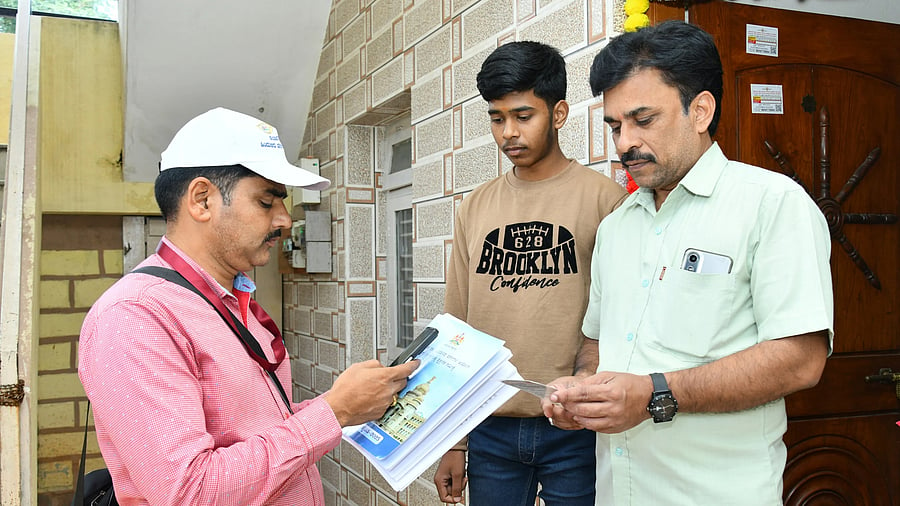
An enmuerator collects data as part of ongoing caste survey . The survey, which began on September 22, was supposed to end on October 7. However, it has been extended till October 18 across the state and up to October 20 in the Greater Bengaluru Area limits.
Credit: DH photo
Bengaluru: The digitalisation of the ongoing social and educational survey by the state commission for backward classes has simplified the data collection process, with all details directly entering the servers of the State Data Centre.
The survey, which began on September 22, was supposed to end on October 7. However, it has been extended till October 18 across the state and up to October 20 in the Greater Bengaluru Area (GBA) limits.
Speaking to DH, Backward Classes Welfare Department Commissioner K A Dayananda explained that the information submitted by the enumerators immediately gets stored in the servers of the SDC, after which even the enumerators cannot see it.
“The High Court has strictly mandated the SDC not to share the data with anyone except the Backward Classes Commission. After the survey is over, we will take only the information that’s relevant for us. The commission will analyse the data alongside a team from the e-governance department,” he added.
During the Cabinet meeting on October 9, the government decided to develop new technologies at a cost of Rs 38.33 crore at the SDC.
During the previous survey overseen by the Kantharaj-led backward classes commission in 2015, the process was longer, as the data was collected manually and was digitalised by Bharat Electronics Limited (BEL).
“We had coded the process, but it was handwritten. In every taluk, BEL used to
keep 10-15 data operators, who would digitalise the survey,” said K N Lingappa, a member of the Backward Casses Commission headed by H Kantharaj.
The data was validated by the Indian Institute of Management, Bangalore (IIM-B). It was later analysed by BEL itself.
“The new process is more advanced technologically. Also, during our survey, the tahsildars, assistant commissioners and deputy commissioners didn’t work to the same extent. But this time, the chief secretary and BCW secretary are conducting daily virtual meetings with respective DCs. That way, officials have become more alert,” Lingappa said.
However, Lingappa cautioned that to make use of the advanced methods, the survey had to be proper. “We had surveyed 94.5% of the population. They need to at least survey 95%. In rural places, the survey is doing well but the challenge will be in Bengaluru. Except for Brahmins, all other castes will enumerate themselves. Brahmins are not interested as they won’t gain anything from this survey.”
According to data from the commission, 1.43 crore of the estimated 1.87 crore households (76.49%) in the state were covered by the end of Sunday.